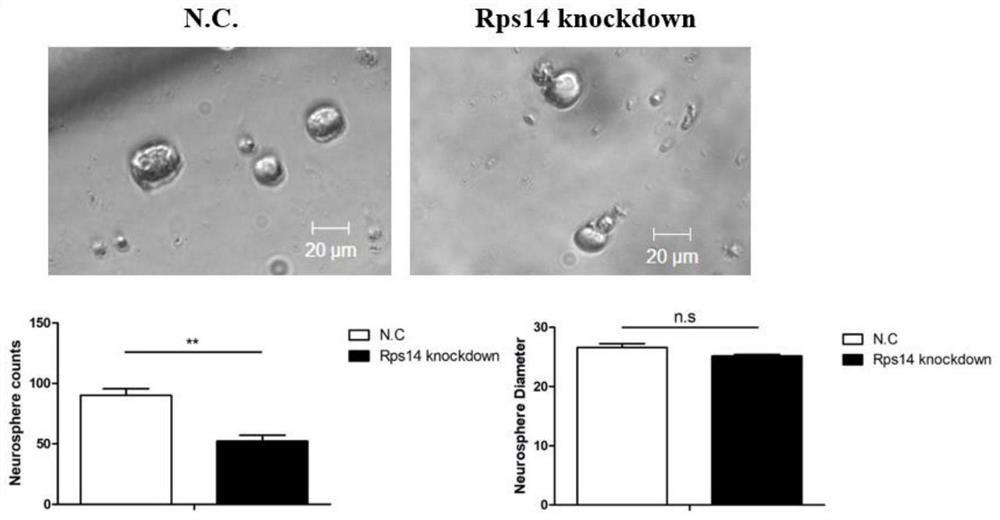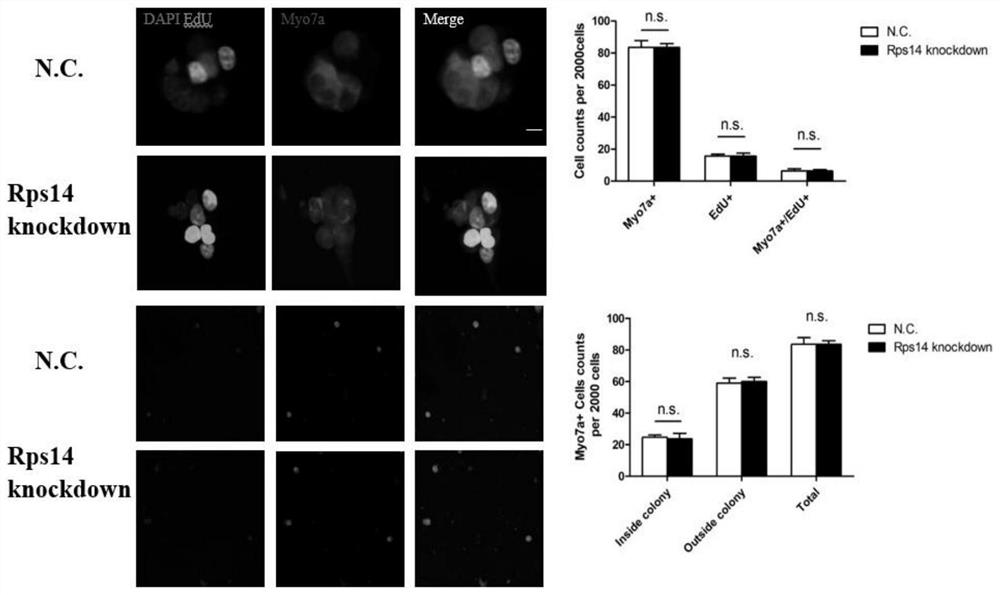Method for regulating and controlling proliferation and differentiation of inner ear stem cells by Rps14 and Foxg1 and application of method
A technology for the proliferation and differentiation of inner ear stem cells, applied in biochemical equipment and methods, DNA/RNA fragments, microbial determination/inspection, etc., can solve the problem that inner ear stem cells cannot be separated accurately and efficiently
- Summary
- Abstract
- Description
- Claims
- Application Information
AI Technical Summary
Problems solved by technology
Method used
Image
Examples
Embodiment Construction
[0037] The following will clearly and completely describe the technical solutions in the embodiments of the present invention with reference to the accompanying drawings in the embodiments of the present invention. Obviously, the described embodiments are only some, not all, embodiments of the present invention. Based on the embodiments of the present invention, all other embodiments obtained by persons of ordinary skill in the art without creative efforts fall within the protection scope of the present invention.
[0038] The present invention is to provide a method for regulating the proliferation and differentiation of inner ear stem cells by Rps14 and Foxg1 and its application. The method for regulating the proliferation and differentiation of inner ear stem cells by Rps14 and Foxg1 comprises the following steps:
[0039]1. Use different siRNAs to knock out the Rps14 gene in OC-1 cells, design shRNA encoding nonsense sequences as a negative control, use nonsense siRNA combi...
PUM
 Login to View More
Login to View More Abstract
Description
Claims
Application Information
 Login to View More
Login to View More - R&D
- Intellectual Property
- Life Sciences
- Materials
- Tech Scout
- Unparalleled Data Quality
- Higher Quality Content
- 60% Fewer Hallucinations
Browse by: Latest US Patents, China's latest patents, Technical Efficacy Thesaurus, Application Domain, Technology Topic, Popular Technical Reports.
© 2025 PatSnap. All rights reserved.Legal|Privacy policy|Modern Slavery Act Transparency Statement|Sitemap|About US| Contact US: help@patsnap.com



